Piolets d'Or Announces the "Significant Ascents" of 2023
This list of 68 climbs is effectively a "long list" used to select nominees of the prestigious alpine award.
Deep in a remote Turkish cave, American cave expert Mark Dickey was dying. The international caving community flew into action.

On September 1, 2023, American caver Mark Dickey was exploring uncharted passageways of Morca, one of the longest, deepest caves in Turkey. Rugged and remote, nestled deep in the Taurus Mountains, just reaching Morca’s entrance requires four hours on a 4WD track from the nearest settlement.
Dickey’s expedition had set up a base camp 1,000 meters (3,300 ft) deep in the cave. Reaching this camp from the surface necessitated approximately 12 hours of subterranean travel, a complex array of rappels, climbs, traverses, crawls, and ultra-tight squirms, sometimes through mud, down waterfalls, and across frigid underground streams. In short, accessing the lower vestiges of Morca is like wiggling your way through a subterranean “Ninja Warrior” course.
Dickey and his fiancé, Jessica Van Ord, were an hour away from the expedition’s 1,000-meter base camp, roped up in the middle of a vertical climb.
That’s when things went wrong.
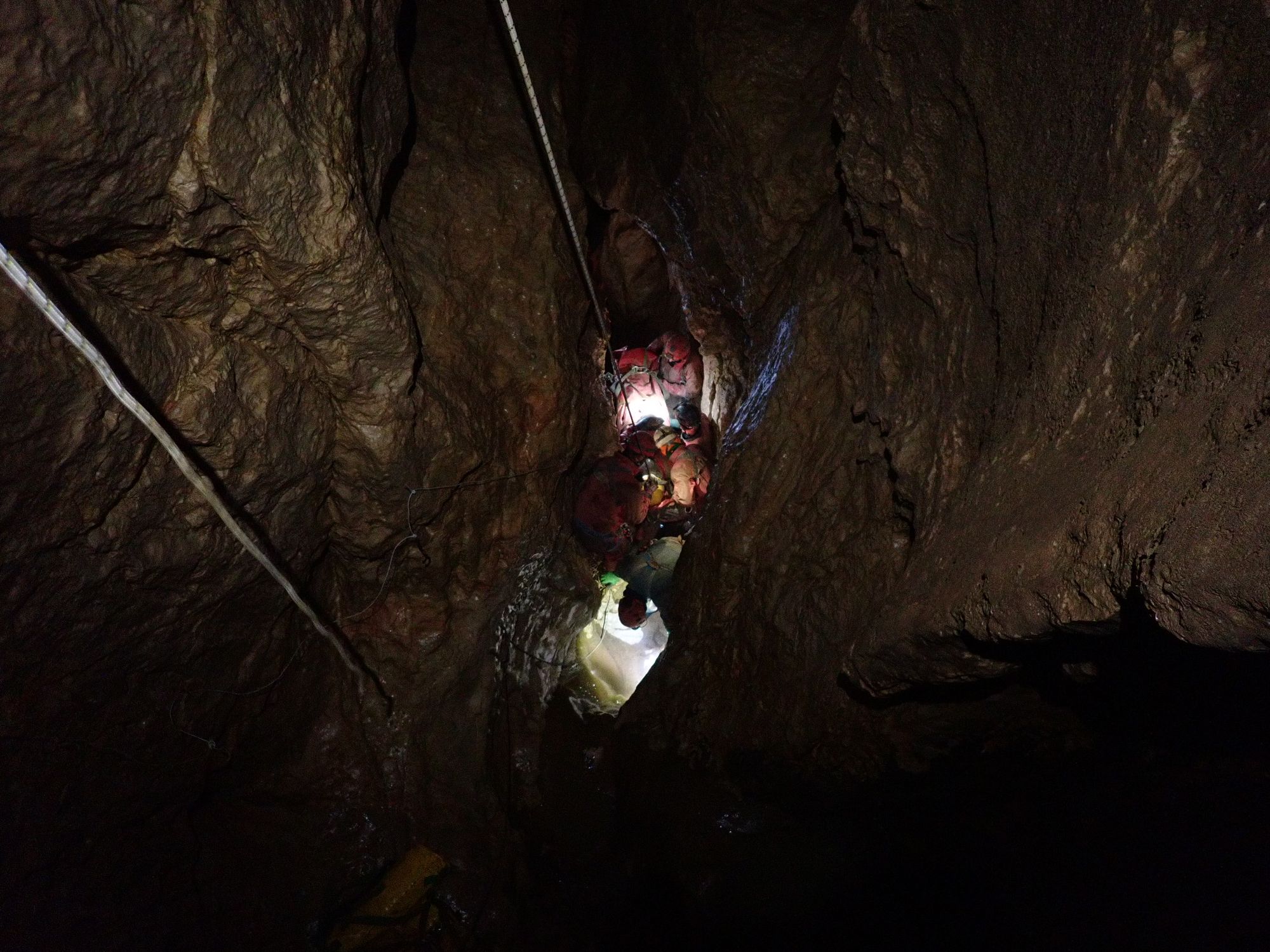
This was Dickey’s second expedition to Morca. The previous year, he’d completed a 100-meter (330-foot) dome climb near the 1,000-meter base camp. “From the top of that climb, [I could see] a waterfall coming in from one side of the shaft, and a window in the ceiling at the top, extending another 20 to 30 meters,” Dickey told The Outdoor Journal.
His return in 2023 had several purposes, including scouting the location to host future courses for the Caving Academy (a nonprofit he founded).
But that glimpse of further passages had also enticed him. “I wanted to get back over to that climb,” he said, “and see if I was able to get my way through the window, to push past a flooded or slumped passage to see if we could get into a new section of the cave.”
But 80 meters up the climb, shit hit the fan. Dickey began feeling deathly ill. “Dizziness, nausea, needing to go to the bathroom, cold sweats… just a whole bunch of simultaneous unpleasant symptoms,” he said. He immediately rappelled down to the base of the dome, and told Van Ord he needed one thing: “Privacy.”
The results weren’t ideal. Dickey had produced a wealth of “black, tarry stool.” Combined with his symptoms, it pointed to major internal bleeding. 12+ hours beneath the earth, without any bagged blood for a transfusion, this was a life-threatening scenario.
Depending on how you look at it, it was either extremely good (or bad) luck that this emergency hit Dickey, and not someone else in the expedition. The team’s lead rescue coordinator was Dickey himself. The 40-year-old American is one of the most experienced and respected cavers in the world, particularly in the realm of rescue operations.
A former firefighter and EMT, Dickey dove into the caving world in the 1990s, and has now taught for the National Cave Rescue Commission for over a decade, leading multi-day courses in a variety of locations around the United States each year.
By his early 30s, Dickey was working across the pond, teaching with the European Cave Rescue Association (ECRA). He currently serves as secretary of the outfit’s medical commission. For the last several years, he’s also ranked as chief of the New Jersey Initial Response Team—a SAR group covering the Northeastern United States.
Dickey specializes as a lead instructor for “SPAR” (Small Party Assisted Rescue) courses. As opposed to external teams coming in to rescue cavers, SPAR courses focus on “a small party rescues one of its own members, who is alert, oriented, and ambulatory to some extent,” Dickey explained.
(It’s hard to miss the irony here. This is the exact situation he was now in, deep in Morca.)
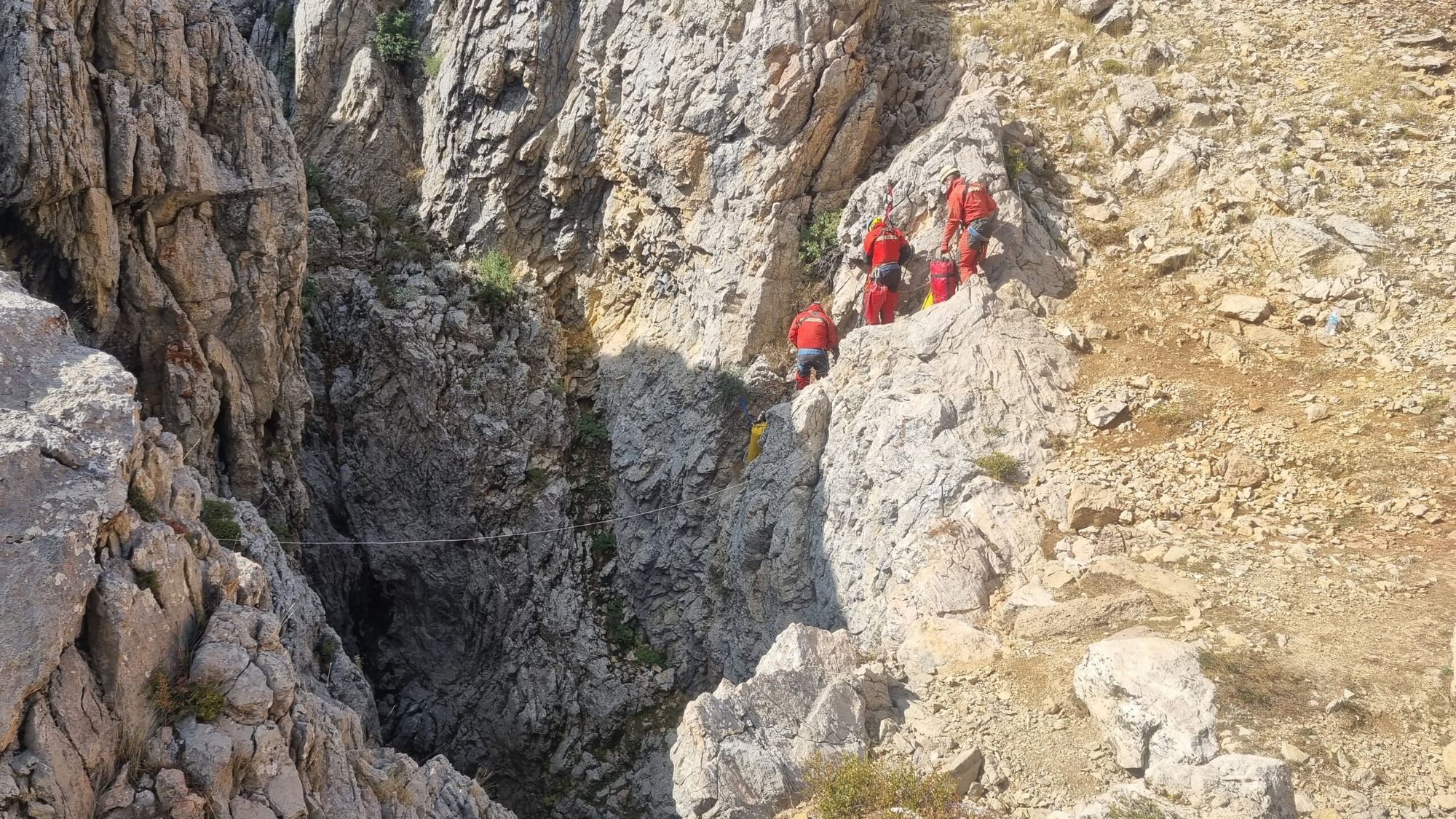
In the bowels of Morca, bleeding his own bowels out, Dickey managed to get back to his team’s base camp with Van Ord’s help. This hour-long jaunt was an odyssey in and of itself, requiring not just walks and crawls but climbs and vertical rope work. “My condition was unpleasant,” Dickey said, “but hey, you push through and do what you need to do.”
Once the pair were back at camp and had alerted the rest of the expedition, Van Ord prepared to go up for help. This was a necessity, because their camp had no direct connection with the outside world. Unlike in the backcountry, for example, Dickey and his team weren’t able to simply send out an SOS on an inReach or other satellite communicator. No helicopter could swoop in and pick them up or drop off supplies.
There is only a small cadre of cavers with the experience to safely reach these depths, much less get someone out of them, and several of them were down there in Morca, sitting around a debilitated Dickey trying to figure out how to help him. For all intents and purposes, they may as well have been in outer space.
By this point it was nearing midnight, and the team had already operated all day long. Dickey convinced his partner and another caver going up with her to sleep for a few hours, see how he felt in the morning, and go for help then.
The following morning, with Dickey seemingly relatively stable, Van Ord and the other caver began climbing. Before they’d made it up two pitches, Dickey was violently vomiting blood. It was clear that things were serious. Before she made it out of the cave, Dickey’s vomiting had increased to a significant volume, requiring another team of two cavers to climb out with this updated info, while the final two cavers stayed behind with Dickey.
“Two or three deciliters of fresh blood were lost in a single instance of vomiting,” Dickey said, speaking of his own near-death almost as though he was describing a medical scenario from a textbook. “So this was now a life-critical situation. Medical care is immediately necessary and depending on how things go, it is appropriate to start a rescue response even if it gets called off later on.”
Dickey paused. “I knew that this was going to be, one way or another, a very big event."
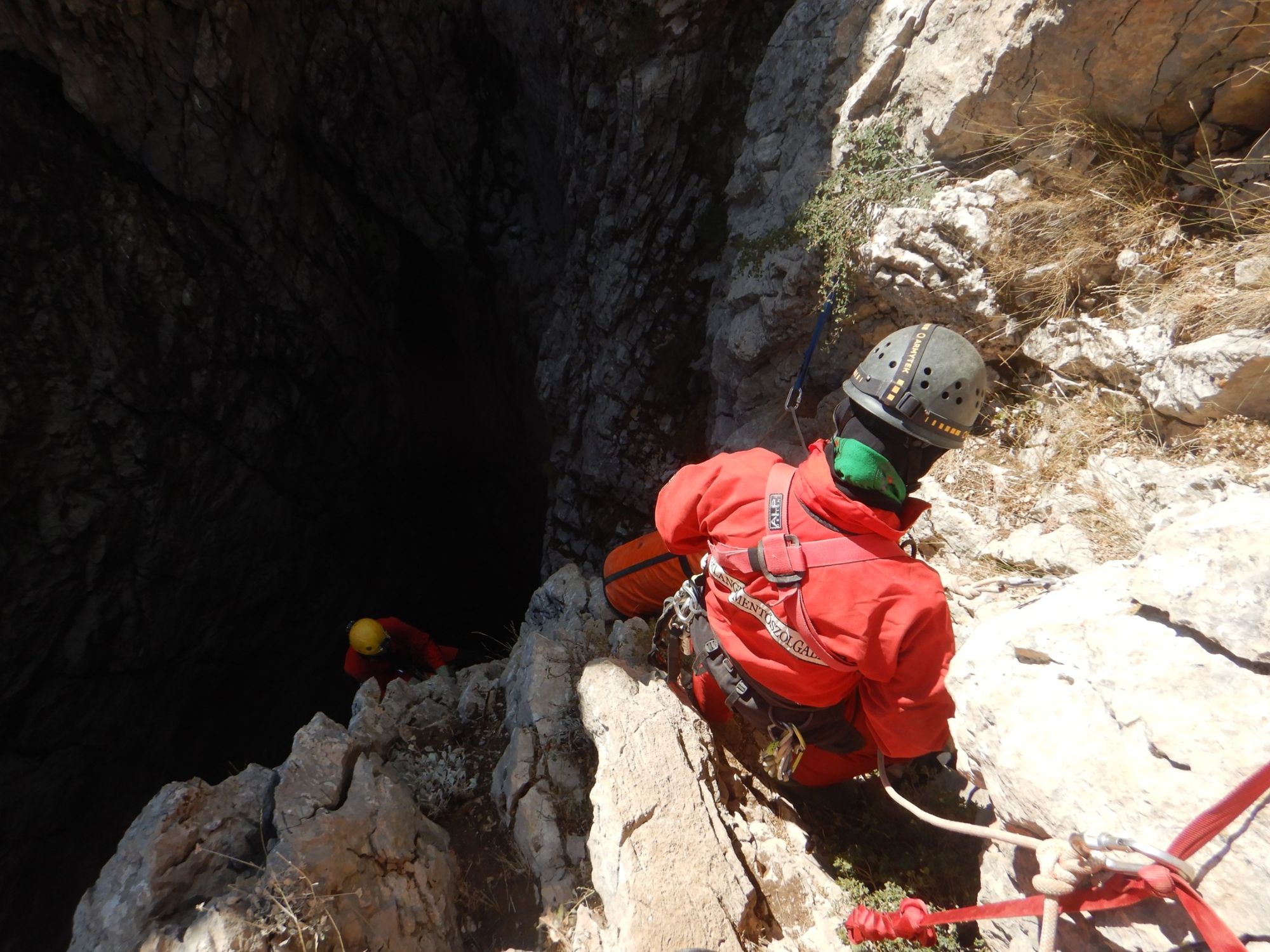
Van Ord was hoping she’d only have to make half of the 12-hour climb to get in touch with the crew topside. As one of the team leaders, Dickey had ensured that communications lines were run down to 500 meters (1,640 feet) of depth before the expedition descended, but between the last check of the phone on the surface and Van Ord arriving at the 500-meter camp two hours later, the battery in the surface phone had died.
“Comms was non-functioning exactly at the moment that Jessica arrived there,” Dickey said, forcing his fiance to go all the way to the surface to reach help.
Up top, Van Ord contacted ECRA and caving doctors using a medical chat Dickey had started two years prior. Teams from all over the world began flying in: Hungary, Bulgaria, Croatia, Italy, Poland, Slovenia, and the United States.
These weren’t just cavers flying in for a professional rescue though. They were coming to help a friend.
Out of the 200-odd people who came together from nine different countries to aid in the rescue effort, Dickey said he knew close to half, and a large percentage of those quite well, many from instructing them personally in cave rescue. Almost all of those flying in had heard of Dickey, as one of ECRA’s leading medical officers.
The first person Van Ord called, late on the evening of September 2, was Dr. Nagy Dénes Ákos, team leader of the Hungarian Cave Rescue Service. Ákos immediately passed the word to fellow Hungarian doctor and cave rescue expert Zsófia Erzsebet Zádor, a close friend who first met Dickey and Van Ord in 2015, during an ERCA expedition in Montenegro. Zádor was in the middle of a 24-hour hospital shift but dropped everything to fly to Turkey and help.
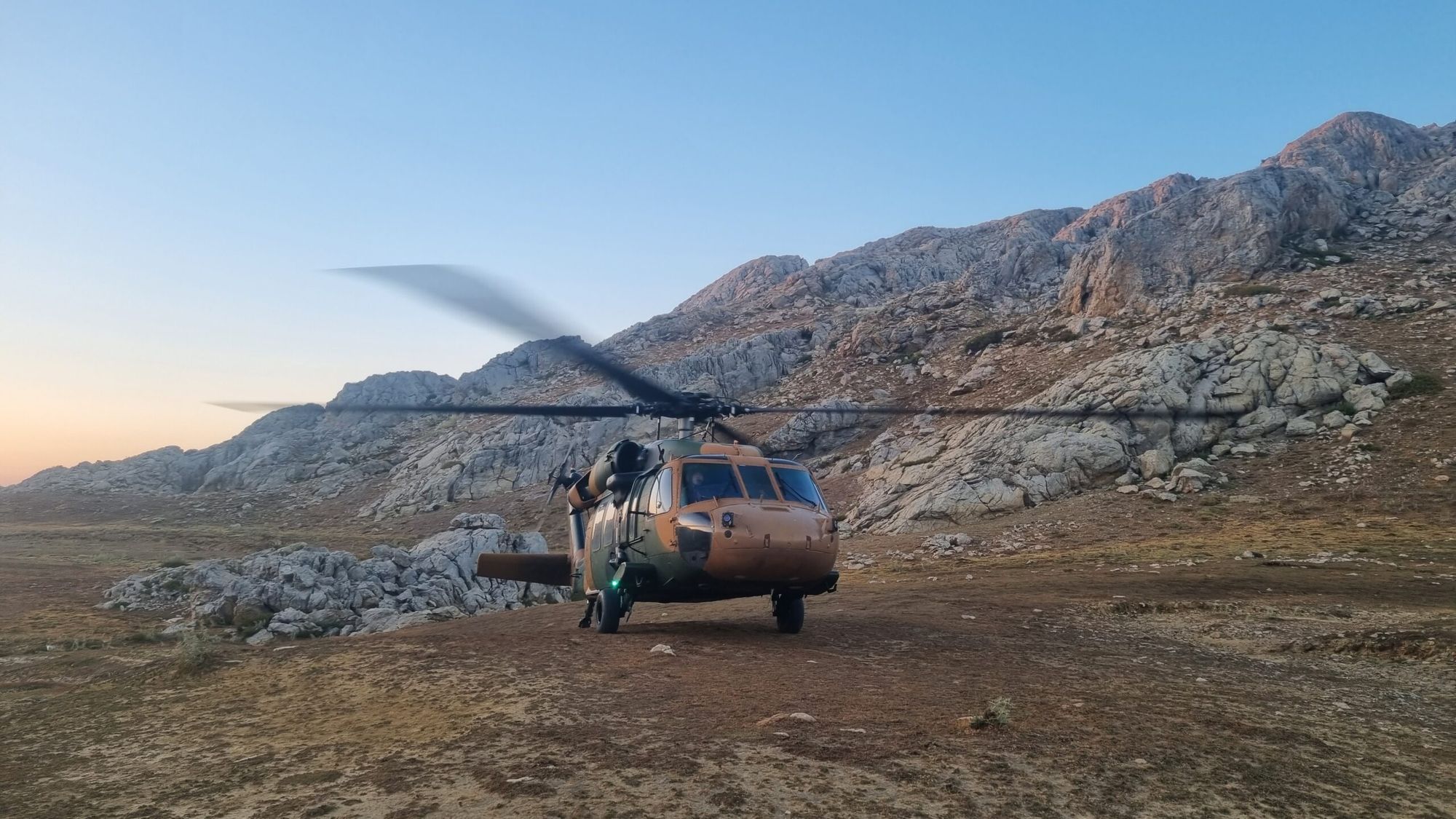
After choppering into the mountains to reach the cave mouth, Zádor was dismayed at the infrastructure. “There was very little to facilitate a rescue,” she said. “A small kitchen, a restroom among some rocks, no equipment for doing anything technical, like additional rescue ropes. There was also no electricity, just one little solar panel.”
By the time Zádor arrived, Van Ord had already secured supplies from the surface and was making her way back down to Dickey with fluids and medicine to mitigate his blood loss.
His condition was rapidly worsening. “I had transitioned from speaking in full sentences and being able to travel to the bathroom to communicating in phrases, vomiting into a bucket, peeing into a bottle, and using a garbage bag for shitting,” Dickey recounted. “Eventually, my communications were down to single words. My pulse was getting progressively weaker.”
On September 4 Zádor, too, began descending into the cave with two Hungarian comrades. They left the cave mouth at 10:00 am, carrying five rucksacks of supplies, and finally reached the expedition base camp at 11:00 pm, 13 heinous hours later.
By the time she reached Dickey, Van Ord, and the others, the former had stopped vomiting fresh blood, and his condition was somewhat stable, helped by fluids and proton pump inhibitors provided by Van Ord upon arrival Blood packs arrived the following day, and the team began a transfusion, further stabilizing Dickey’s condition. At this point, there was no longer an immediate threat to his life. The new mission was getting him out.
Van Ord, who has been training in cave rescue since 2016, credits a rapid early response from the Turkish government with saving her fiancé’s life. “The government got fluids there, they got blood there, and things we couldn't have done on our own,” she said. “There were at least three occasions when the bleed restarted and Mark would have died without the IVs.”
“I was astonished that it actually happened right away,” she added. “People have died because they didn't know how to send people into a cave. There have been horrible outcomes from cave rescue in the past.”
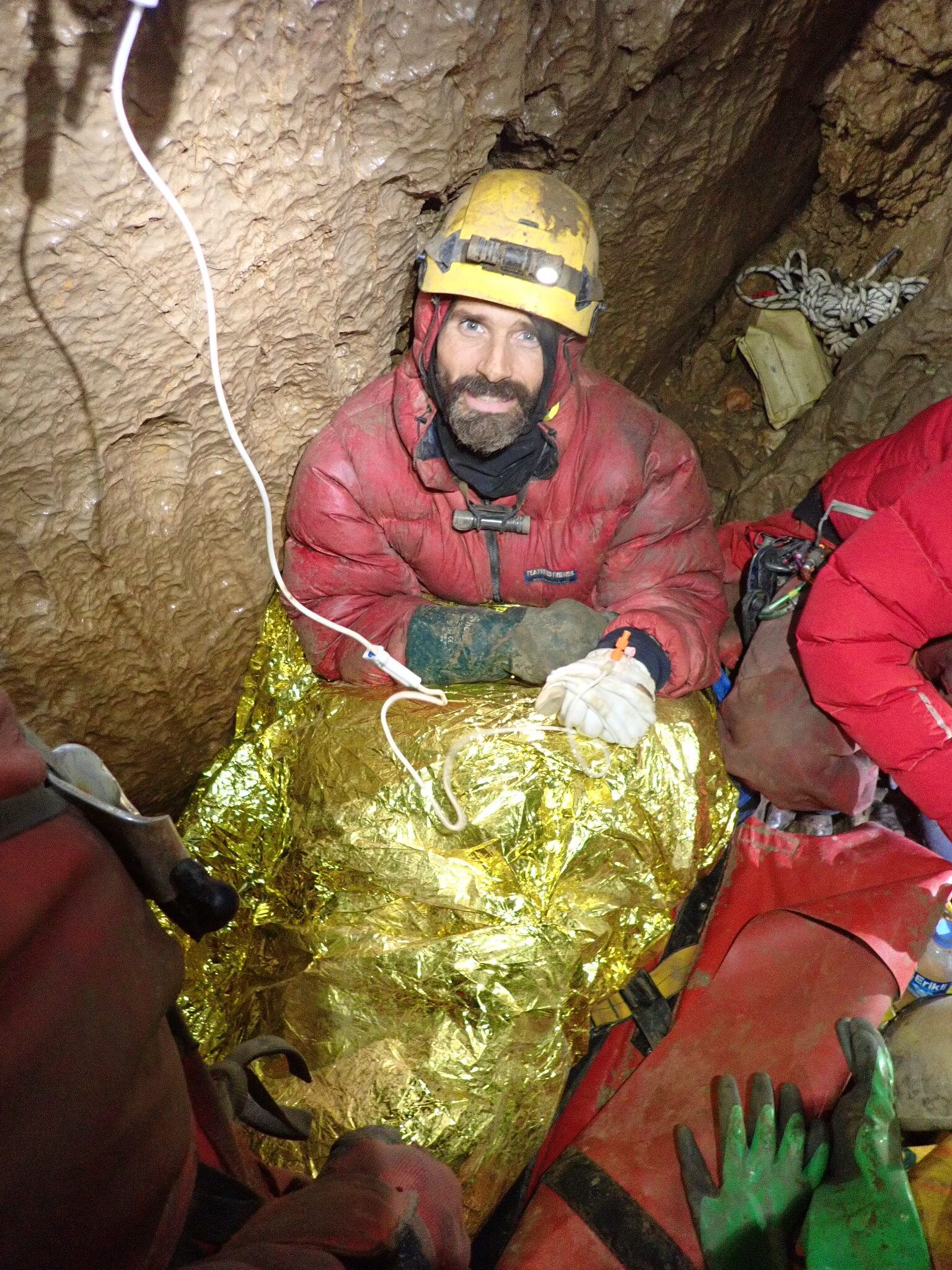
Even once the world had been alerted and supplies had been sent, and Dickey had been stabilized, there was no smooth sailing. They were still in the depths of the earth.
“Operating at 1,000 meters, your circadian rhythm totally disappears,” Van Ord said. “A lot of people will start staying awake for 20 hours, and then eventually they're waking up at 5:00 PM. So instead of having five days, they have four increasingly long ones. Your body clock can get pretty interesting…”
An alpine cave, Morca is also quite cold (4°C/39°F). This presented an ever-present danger of hypothermia for Dickey. The flip side of that is this was the ideal temperature to keep the bagged blood refrigerated, Van Ord said, but then it actually had to be warmed up by body heat before it was administered. Zádor recalled how she slept with blood in her sleeping bag to warm up to give it to Dickey the following morning.
In more than one way, the Morca rescue was uncharted territory. But perhaps most importantly, a rescue had never been attempted at this depth.
On one hand, there couldn’t have been a better patient to act as a “first” for this groundbreaking scenario than a veteran cave rescuer like Dickey.
On the other, it was extremely frustrating for him to be relegated to the role of a patient.
“Even if people are talking in a foreign language, over comms, I could pick up technical terms,” he explained. “I could overhear all the conversations because camp is only so big and everything is just thin tent walls. I know what supplies are in camp. I know what supplies are being consumed. It's completely impossible to isolate me from that information. And it was a stressful environment for me, because all of these rescue activities were occurring and I was stuck being a patient.”
“Of course, I had no questions as to the integrity and the goals of these people,” he said. “It was just hard being only the ‘patient,’ because based on my background experience, I felt that there was valuable input that I was able to offer to the rescue.”
By the time Dickey began moving out of the cave, it was September 9th, over a week after he'd fallen ill. Throughout the ascent, medical personnel stayed by his side. But this isn’t just a long hike up a steep shaft. It’s passageways and tunnels of all angles, shapes, and sizes. Climbs. Rappells. Crawls. Tyrolean traverses.
Rope systems had to be rigged. Passageways had to be blasted with explosives to make them large enough for Dickey’s litter to be pulled through. In total, he spent 29 hours in a litter getting hauled out of the cave, transferring through over 70 different re-belays.
“You don’t just take one rope, attach it to the litter, put a bunch of people on that rope and pull,” Dickey explained. “You are dynamically transferring the patient mid-air from anchor to anchor to anchor with each one being an independent haul system, you have to coordinate everything.”
Zádor recalled how during the famous Tham Luang cave rescue, when a kids soccer team was trapped underground in a flooded Thai cave, many of her non-caving medical colleagues were glued to the screen, but perplexed, asking her inane questions like, “Why don’t they just come out?” “I was looking at them like, ‘Are you fucking stupid or what?’” she recalled, laughing. “It’s extremely difficult to explain how complex it is to operate in caves like this.”
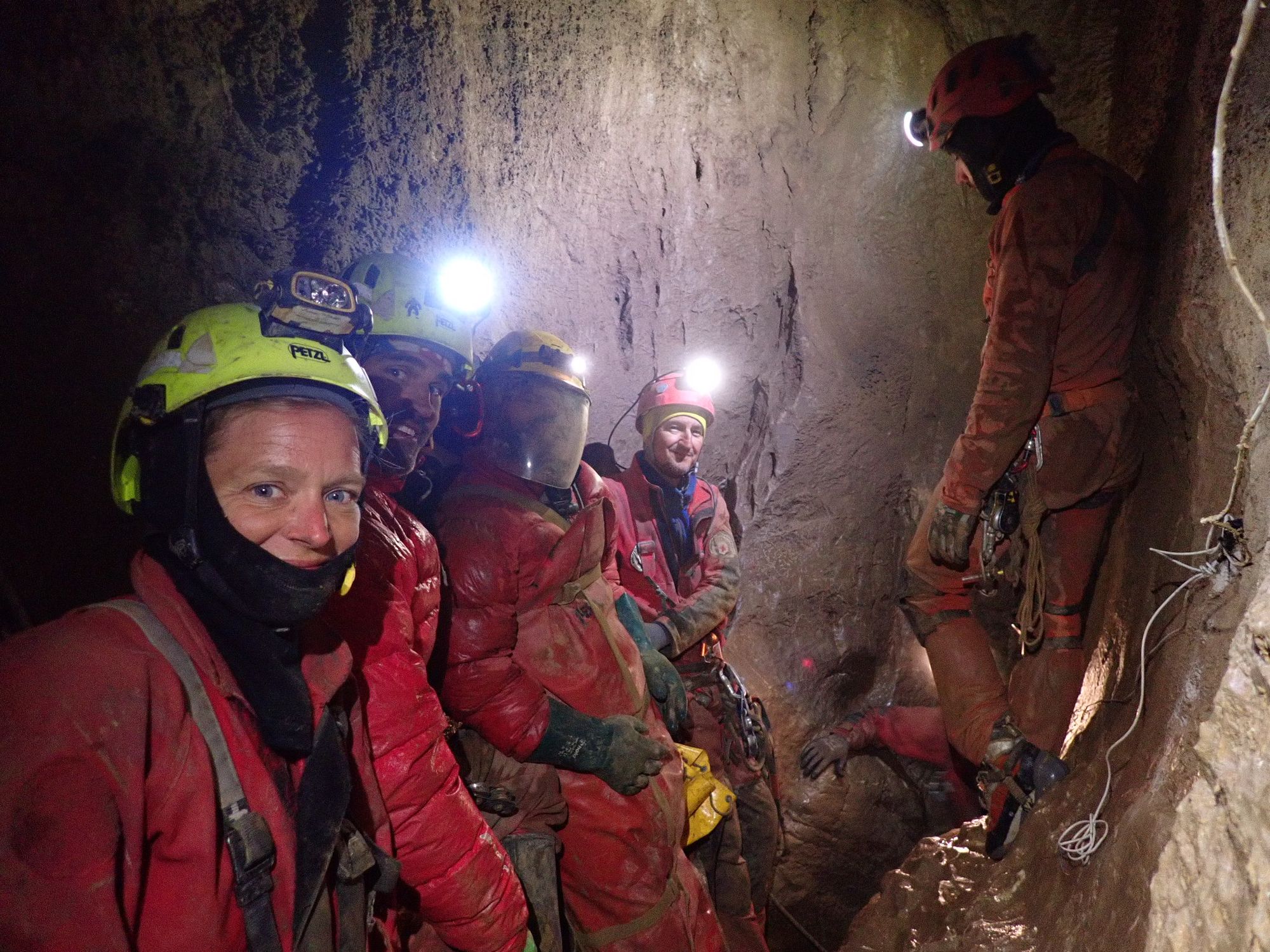
29 hours being hauled through muddy cave shafts in a litter is an experience Dickey has no desire to repeat. “Trust me, it was not pleasant. It downright sucked,” he said, chuckling. “But I've spent way more hours in total across my life in a litter than just that. And a huge amount of that is in training environments where people are learning about moving a litter.”This experience and knowledge meant that it was far less stressful than it may have been for the average patient. “I was comfortable, in that sense,” he said. “I was being moved by professional teams. Because of my experience and knowledge, my arms could be free, I could communicate with them. If they needed assistance, I would provide assistance where I could just stabilize myself. If they asked me to do something, I was able to do it and I understood exactly what was happening at any given moment.”
Over 24 hours after he began moving out of the cave, and a week and a half after he’d fallen ill, Mark Dickey was hauled out of Morca cave, accompanied for the last leg by a team of Turkish rescuers. “We absolutely wanted the Turkish Cavers to have that final honor of bringing me up in the light of all of the media,” he said, “to show that we had total respect for their capabilities and that this was their home turf.”
What followed was a media hurricane. The Morca rescue was the deepest successful cave rescue operation in history. It comes just ahead of the 2014 Riesending rescue in German Bavaria, which recovered a patient from 950 meters [tk ft], took a team of 700 people over 11 days, and cost nearly €1 million.
The transfusions given to Dickey, as well, were among the first and only blood transfusions administered underground, the deepest, and by far involved the largest amount of blood. “It’s a crazy environment to render medical care, and maintain a medical presence of medical doctors throughout ten days,” Dickey said. “It’s an extraordinary accomplishment.”
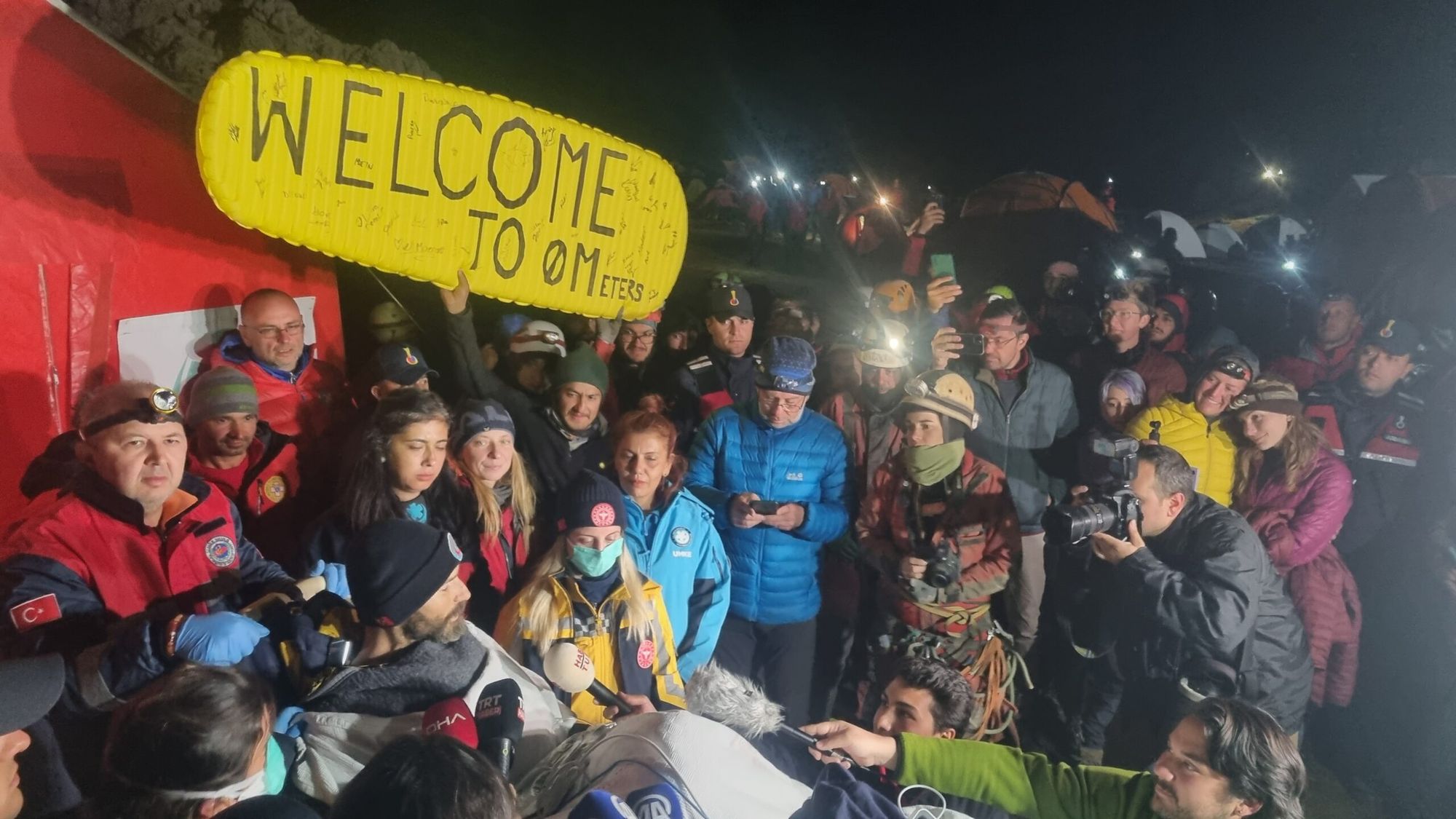
The response to Dickey’s emergency was by all accounts unprecedented. His stature in the caving community may have played a role, but what it really came down to was Turkey’s fast response with the necessary medical supplies to stabilize his condition, and ECRA’s immense connection to cave rescue teams across Europe. “ECRA is like a mind hub for European cave rescue,” Zádor said. Without ECRA’s help, she, Dickey, and Van Ord agreed that the process would have been much more difficult.
The key message Dickey has to convey is the importance of supporting cave rescue organizations—all of whom are nonprofit and privately funded—so that they can continue to save lives. His friends have organized a GoFundMe to help repay the various rescuers who came to his aid. Readers are encouraged to donate.
Van Ord seconded this, adding that it was a principal example of the importance of proper education. “Caving isn’t something that you do alone, and it's not something you should do without proper training,” she said. “ It’s a whole sport in and of itself. People shouldn't learn how to rock climb just by ‘figuring it out,’ right? They seek out someone who knows how to climb, to properly place protection, care for ropes, tie in, what harness to use, belay device… All of that exists within caving as well.”
For Americans like herself, Van Ord recommended training with caving clubs under the National Speleological Society. “Elsewhere, seek out the caving clubs within your country and learn from them,” she said. “You can’t imagine how important proper training is.”
Dickey’s ultimate medical diagnosis was an ulcer next to a vein—which had already partially healed by the time he was evaluated in a hospital. “Statistically we can probably say it was a bacterial H. pylori [Helicobacter pylori] combined with stress, but it was totally unknown,” he said. Before the incident, “I had no symptoms, no signs, no reason to believe this existed.”
When The Outdoor Journal spoke with Dickey a couple of weeks after his rescue, he said he was back to about 60% health, and feeling better by the day. In fact, he’d already been back inside a cave, as part of a Hungarian Cave Rescue Service training event.
He was quick to add: “But it was only a horizontal cave, and I was five minutes from the entrance.”
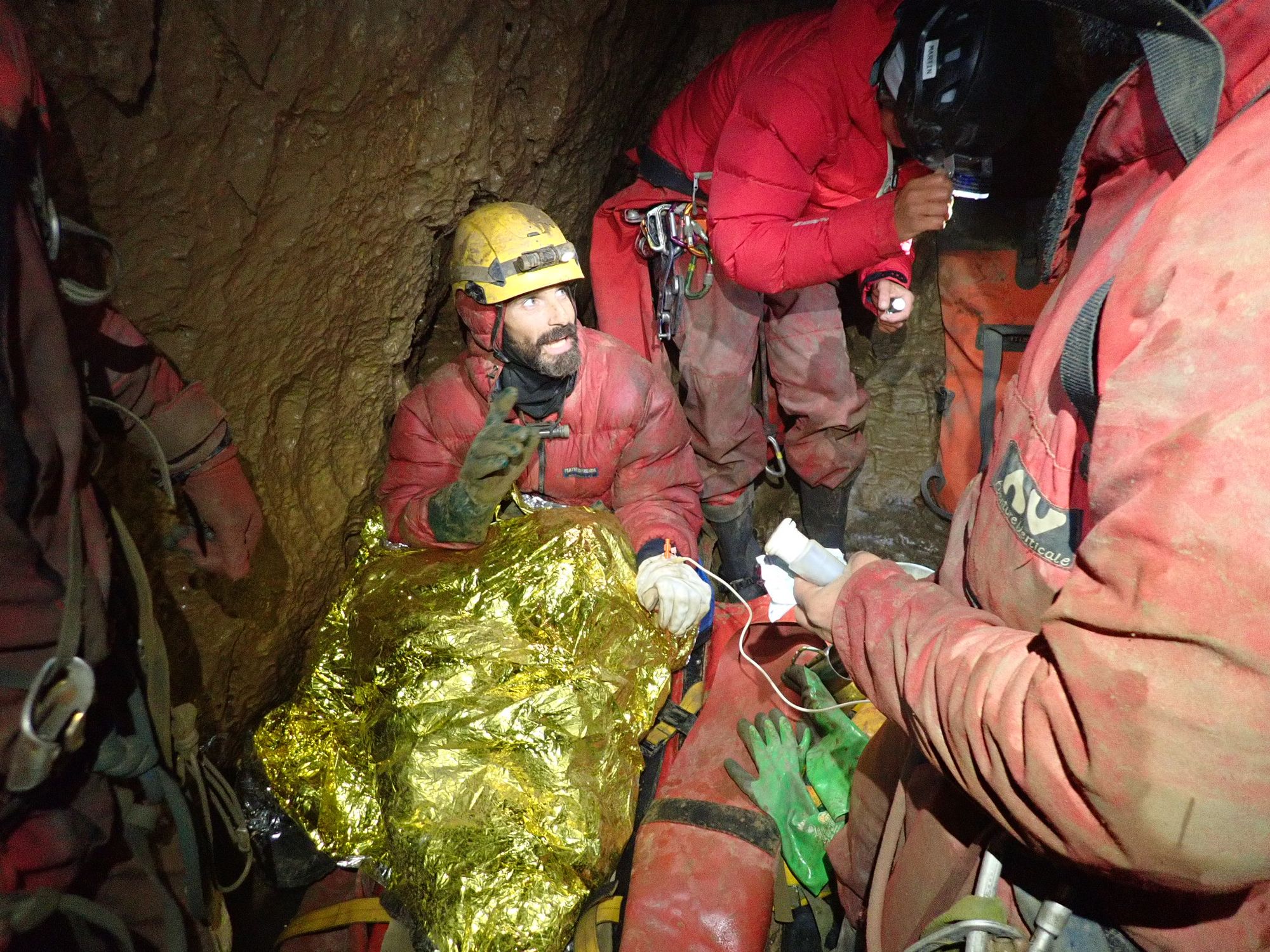
2nd best newsletter in the universe